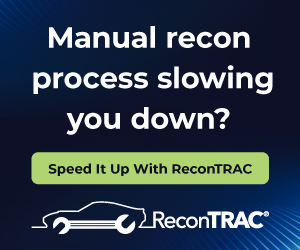
When looking at financial reporting in the dealership environment, not all reports are created equal
I admit it, a deep discussion on financial reporting isn’t the most stimulating topic in the automotive space. It’s not the first thing we think about in the morning but it’s embedded throughout every great organization.
Consistent, timely and transparent reporting adds a level of visibility to a corporation’s financial health, giving insights into performance, operations and cash flows.
Typically, we think of reporting from an internal and external perspective. While each disseminates valuable information, their purpose and audience differ substantially. Let’s look at each category separately:
Internal Operational Reporting
These reports are built, on a bespoke basis, for each dealership. They present information on, really, “whatever you want.” It can be a report on absorption rate, inventory turns, employment costs, gross profit per unit levels, F&I products per delivery or anything else you feel is important. There are no governing rules for this level of reporting. It is literally defined by your key internal stakeholders.
All internal reporting has a purpose in the dealership space — to help you improve efficiency or increase profitably. That’s it! You use this information to identify trends, manage cash flows, enhance working capital, kickstart or unwind corporate initiatives, optimize operations and improve business relationships.
Arguably, these are the most important reports you’ll receive in the day-to-day operations of your dealerships. Why? Because they are forward looking vs external reporting which look backwards in time. As the old adage goes, be “proactive not reactive.” That’s why dealers love working with these types of reports.
Leverage internal reporting to drive change in your automotive group. Customize them to really dial into specific areas that require attention. Use the technology of the day to make these reports “real time” so you can truly move your organization at lightning speed. The ability to understand internal reporting is the driving force behind success in the automotive ecosystem.
External Financial Reporting
The rules associated with accounting for specific transactions are defined by Generally Accepted Accounting Principles (GAAP).
Whenever you buy or sell a car, complete a service or pay your employees, these transactions need to be journalized into your accounting system. Within the Canadian automotive industry there are two levels of GAAP that need to be considered. ASPE (Accounting Standards for Private Enterprises) is designed for privately held dealer groups whereas IFRS (International Financial Reporting Standards) is to be applied for publicly traded ones such as Auto Canada.
Leverage internal reporting to drive change in your automotive group. Customize them to really dial into specific areas that require attention.
For the typical auto dealer, there aren’t too many differences between ASPE and IFRS. Both sets of criteria will ultimately cast substantially similar financial statements: Balance Sheet, Income Statement, Statement of Retained Earnings and Cash Flow Statement.
The difference really lies with the treatment of certain revenue recognition policies and capital leases. Moreover, if your dealership group invests in certain financial instruments, there will be some major differences to the way income is presented each year.
ASPE is also deemed slightly more flexible on certain accounting treatments allowing dealerships to save on administrative costs and tailor external reporting in a manner that fits their profile better.
The intent of this article is not to educate you on the technical aspects of GAAP but rather to make you aware that there are differences. That is, when you are comparing the external financial statement of one dealer group to another, you may not be comparing apples to apples.
These differences will substantially impact KPIs such as current ratio, debit to equity and EBITDA calculations and ultimately the valuation of your business. There are also tax implications to consider as well.
All the great dealer groups out there offer a suite of real-time internal reporting and solid backwards looking external financial statements.
Both of these are required to take stock on the health of your business and to satisfy the requirements of your capital stack (i.e. bank loans, investors, etc.).
As important as it is to build these reports, it is much more important to use them effectively. Define your cadence. Understand your goals. Know your purpose and track your progress. Doing this will lead to a better run dealership group.
“Keep Calm and Report On!”
















